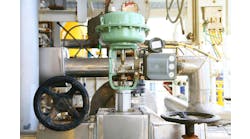Shell Makes Gasification Fun and Emerson Makes Thermocouples Interesting
How interesting can a thermocouple be, anyway? If you're building a gasification plant, they can be very interesting indeed, especially if they are a frequent point of failure.
Jack Jones, from Shell Global Solutions, gave a very quick "Gasification 101" this morning at Emerson Exchange. "There are two kinds of gasification systems," he said, jibing at his competition, "even though other people don't think so. There are liquid systems, that take liquid feedstocks like bottoms and liquid byproducts and make syngas from them. We've been building them since 1956 and currently have 87 gas/oil units operating. There are also solids gasification systems, which are newer, and we have 5 units in operation. These units use coal, lignite, pet coke, oil residue, biomass, and other relatively low BTU solids for their feedstock."
Temperature is the important controlling parameter for a gasification system. Emerson's Steffen Langner, director of temperature for Emerson Europe, took over the tutorial at this point to talk about thermocouples. How interesting are thermocouples and thermowells? Well, when you want to control a gasifier at 1700 degrees Celsius, they can get very interesting, Langner said. Not to mention that gasifiers work at up to 65 bar, in high concentrations of hydrogen, and high soot and metal content.
"Traditional thermocouples and thermowells don't work well at that temperature," Langner reported. "Metal thermowells work at temperatures under 1300 degrees C. quite well," he said. "Sintered metal thermowells die quickly at 1700 degrees, but ceramic thermowells work quite well with a margin for safety."
What produces thermowell and thermocouple failure? "Mechanical, or physical stress does," Langner said, "as does chemical stress. Carbon penetration is a real problem, as is the reduction of the Platinum melting point when the thermocouple is poisoned by hydrogen intrusion, or other chemical diffusion."
Langner showed pictures of thermocouples that exhibited a failure mode he graphically called "bamboo structure." Instead of a solid thermocouple, there were bamboo-like breaks all along the length of the rod.
"What the customers need," Langner reported, "is a long operating sensor life, with long term stability and reliable measurement. Using our ceramic thermowell, and sapphire tube thermocouple construction, and our dual gastight process pressure seals, we have been able to maintain proper operation in excess of 16,000 hours (667) days, with no contamination."
"This allows us to predict the sensor lifetime, schedule maintenance, and provide better measurement," he said.
So even with the emphasis we all place on advanced process control, wireless, distributed control and asset management, we can never forget the lowly thermocouple and thermowell"¦one of the basics of process automation.


